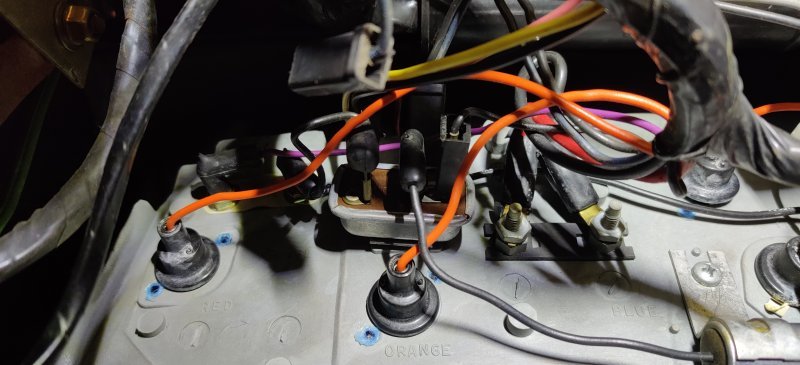Strykr73
Member
I have reasons to suspect that the 6V voltage regulator in my '73 Charger is bad. The symptoms being: A) No responsiveness from Oil Pressure, Fuel Level, or Temperature gauges. B) DC Voltmeter measures never sees 12V, and always less than 6V on average while measuring output.
Here is a picture of the regulator:

It has three terminals on the rear. I don't remember the order. It also has a clip on the front which is folded over and screwed to the back of the cluster.
I purchased a regulator which claims to be correct for this model and year but it isn't. You would think by this point I would have learned to take things apart first before buying the replacements...
I've seen some examples of where people have purchased off-the-shelf linear regulators and put them in place here, but I'm not convinced that's the best way to go, considering it's nearly impossible to get this stupid dashboard out.
Advice welcome and appreciated!
Here is a picture of the regulator:

It has three terminals on the rear. I don't remember the order. It also has a clip on the front which is folded over and screwed to the back of the cluster.
I purchased a regulator which claims to be correct for this model and year but it isn't. You would think by this point I would have learned to take things apart first before buying the replacements...
I've seen some examples of where people have purchased off-the-shelf linear regulators and put them in place here, but I'm not convinced that's the best way to go, considering it's nearly impossible to get this stupid dashboard out.
Advice welcome and appreciated!















